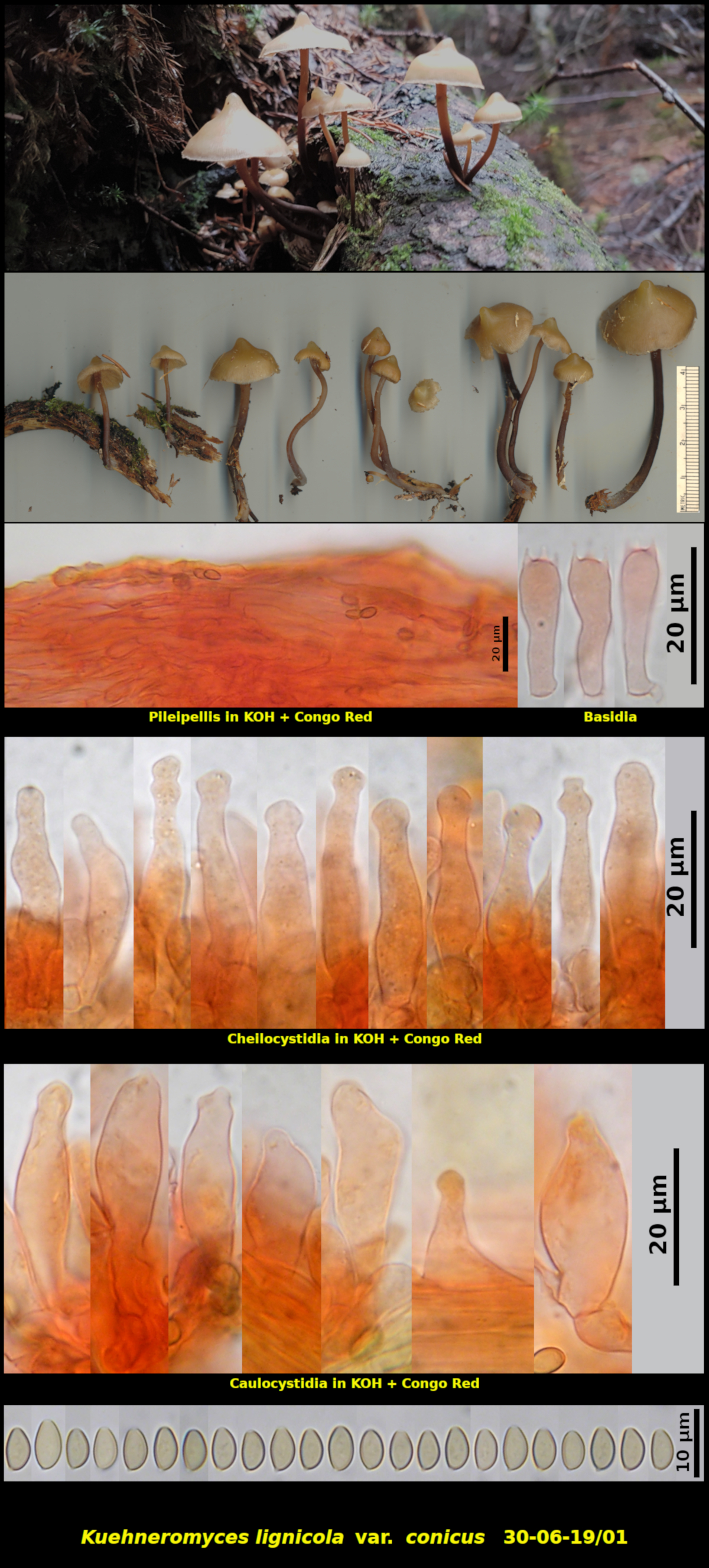Fleshy Fungi of New Brunswick >>
Kuehneromyces lignicola var. conicus
Kuehneromyces lignicola var. conicus (A.H. Sm. & Hesler) M.M. Moser

Gregarious to clustered (many) on a dead conifer log in forest dominated by Abies balsamea and Picea rubens. Kennedy Lakes Protected Natural Area, New Brunswick (30-06-19]01)
Basidiospores reddish brown in spore print, ovoid, slightly flattened dorsiventrally, smooth, with a prominent apical germ pore, 5.6-7.3 X 3.3-4.0 µm, Q = 1.64-1.90 (average[32]: 6.2 X 3.5 µm, Q = 1.76). Basidia 4-spored, clamped at base. Cheilocystidia ventricose, commonly capitate (hence lageniform), with apex occasionally slightly subnodulose but never overtly lobed or branched. Caulocystidia produced in clusters at the extreme apex of the stipe, ventricose, occasionally slightly swollen at apex. Pileipellis a thin cutis, slightly gelatinized as viewed in KOH. Clamp connections abundant throughout.
Smith and Hesler (The North American Species of Pholiota, 1968) originally described this as Pholiota conica based on a single collection made in northern Idaho. The species remained obscure and unreported until 1994 when the European mycologist Meinhard M. Moser (Öst. Zetschr. f. Pilzk. 3: 101-112) reported two collections from Austria. Moser verified his identification by examining Smith and Hesler's original herbarium material. Moser recognized its similarity to K. lignicola and transfered it to that species as K. lignicola var. conicus. This collection from New Brunswick is apparently only the second North American record of this taxon.
Kuehneromyces lignicola var. conicus is similar to K. lignicola var. lignicola, the type variety. It differs mainly in having a pale brown and very sharply umbonate and conical pileus. The often capitate and ventricose cheilocystidia differ somewhat from the those of the type variety which are often conspîcuously lobed at the apex.Photo: D. Malloch (30-06-19]01)